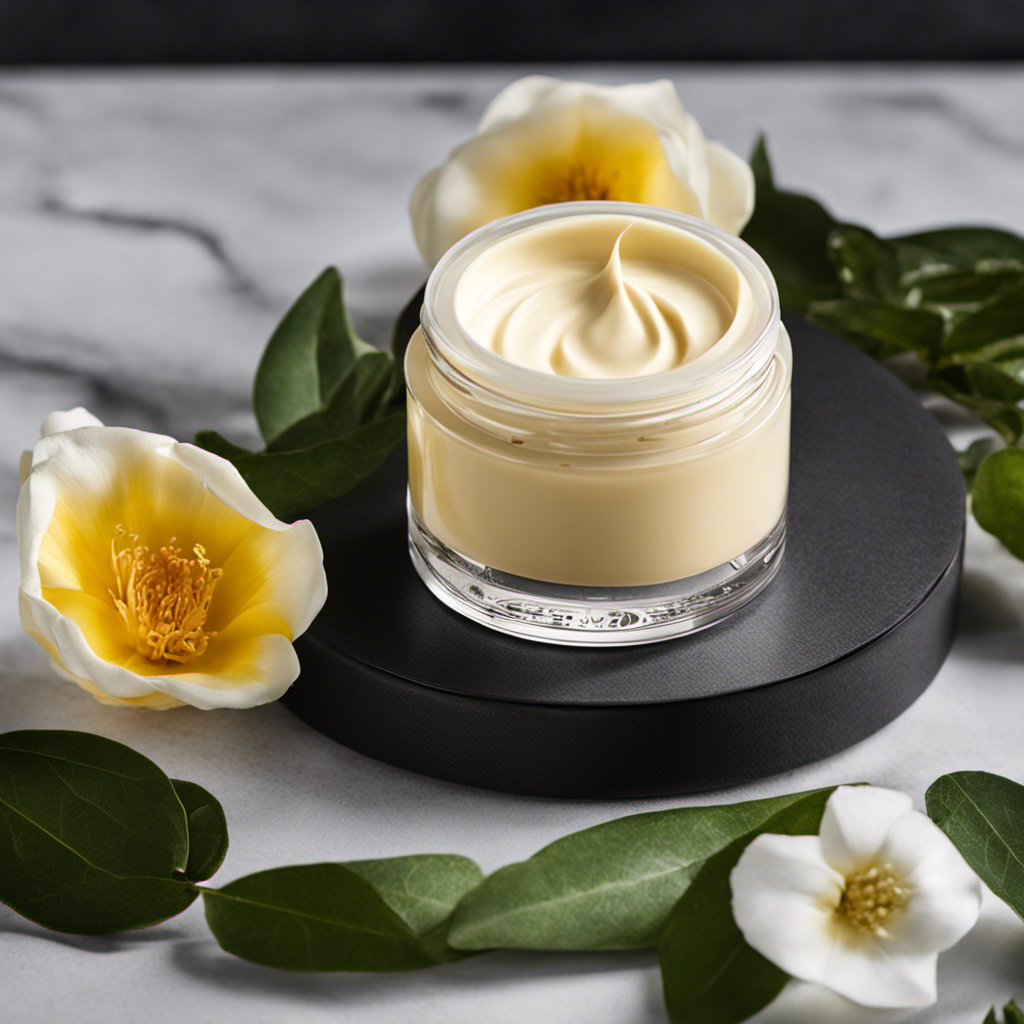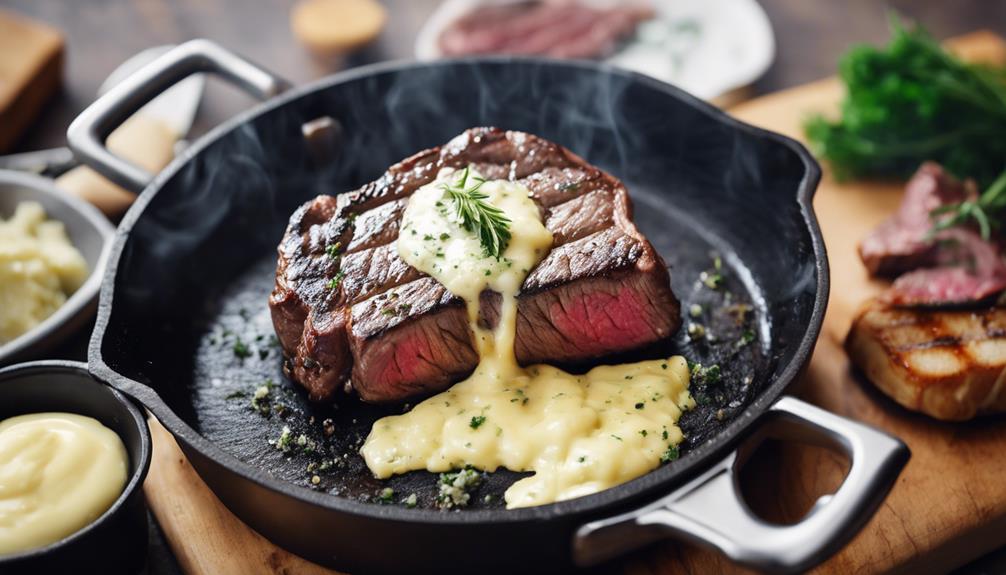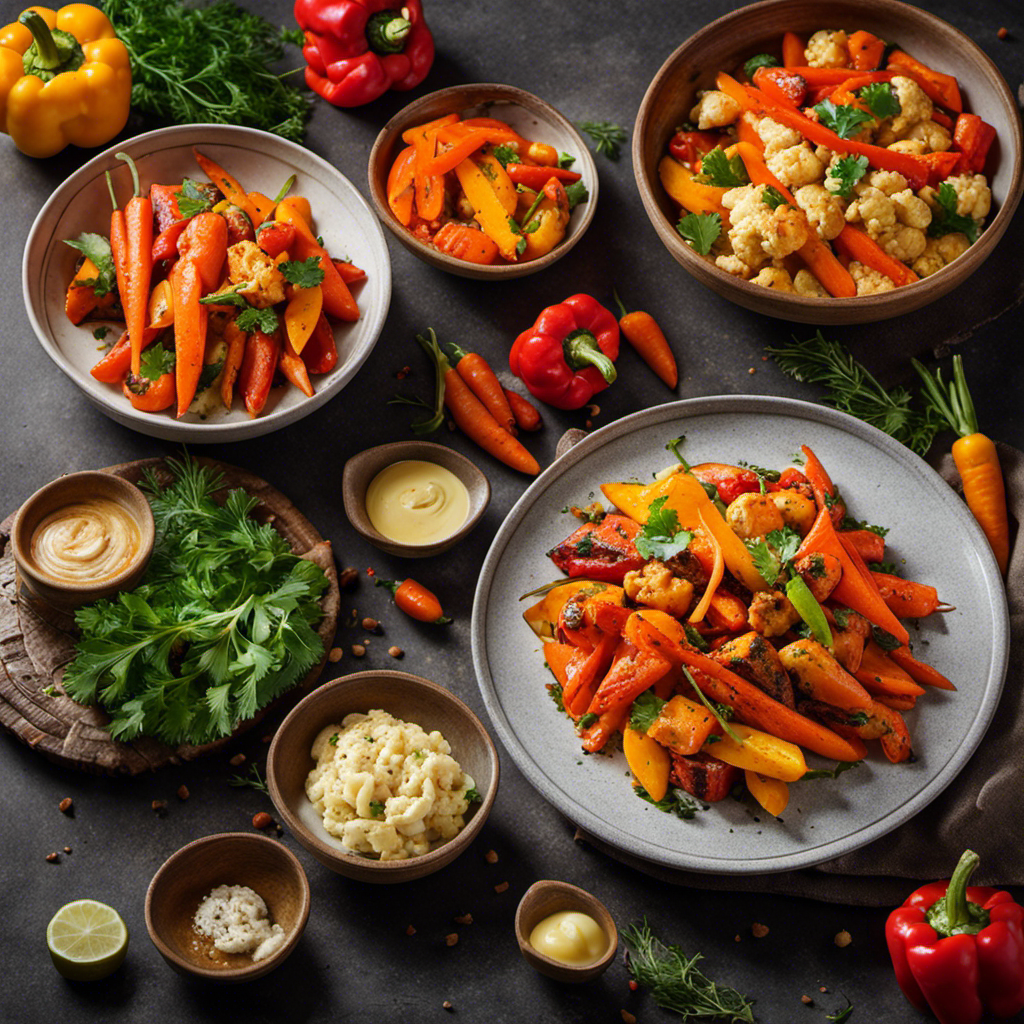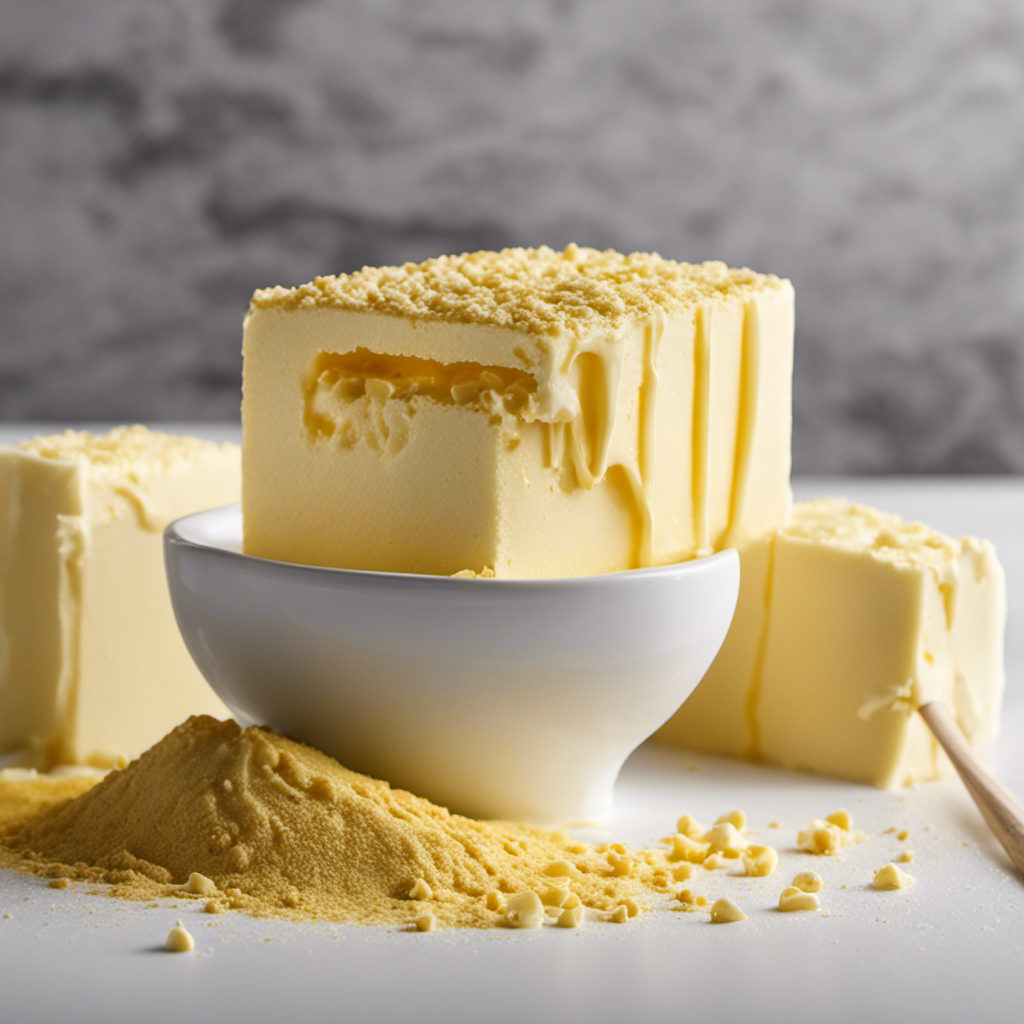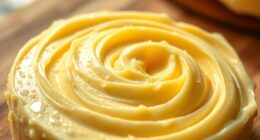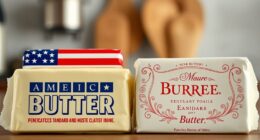I really enjoy cookie butter. Were you aware that it’s gaining popularity as a spread and ingredient in many desserts?
In this article, I’ll share with you my tried and true recipe for making delicious homemade cookie butter. Using just a few simple ingredients and following easy step-by-step instructions, you’ll be able to create a creamy and irresistible spread that you can enjoy on toast, in sandwiches, or even in your favorite baked goods.
Let’s get started!
Key Takeaways
- The main ingredients needed for cookie butter are cookies, oil, butter, powdered sugar, and vanilla extract.
- The steps to make cookie butter include blending cookies, creaming butter and powdered sugar, adding cookie crumbs and other ingredients, and refrigerating before enjoying.
- Common mistakes when making cookie butter include overprocessing cookies, not allowing enough time for butter to soften, using stale or soft cookies, not scraping down the sides of the bowl, and using too much or too little oil.
- Tips and tricks for perfecting cookie butter include ensuring cookies are finely blended, using fresh and crispy cookies, experimenting with different types of cookies, adjusting the amount of powdered sugar, and adding spices for extra flavor.
Ingredients Needed for Cookie Butter
To make cookie butter, you’ll need a few key ingredients. The most important ingredient is, of course, cookies. You can use different types of cookies to make cookie butter, depending on your preference. Some popular choices include chocolate chip cookies, Oreos, and graham crackers.
The type of cookie you choose will affect the flavor and texture of the cookie butter. Once you have your cookies, you’ll also need some oil, such as vegetable or coconut oil, to help bind everything together.
To use cookie butter in baking recipes, you can simply spread it on top of your baked goods, like toast or pancakes. You can also incorporate it into the batter or dough of your baked goods for an extra rich and decadent flavor.
Step-By-Step Instructions for Making Cookie Butter
Start by gathering all of your ingredients for making this delicious spread. You will need:
- 2 cups of your favorite cookies (alternatives include graham crackers or speculoos)
- 1/2 cup of unsalted butter, softened
- 1/4 cup of powdered sugar
- 1/4 teaspoon of vanilla extract
- A pinch of salt
To make cookie butter, place the cookies in a food processor and blend until they turn into fine crumbs. In a separate bowl, cream the softened butter and powdered sugar until light and fluffy. Add the cookie crumbs, vanilla extract, and salt to the butter mixture and mix until well combined. Scrape down the sides of the bowl as needed.
Transfer the mixture to a jar or airtight container and refrigerate for at least an hour before enjoying.
Common mistakes in making cookie butter include overprocessing the cookies, which can result in a grainy texture, and not allowing enough time for the butter to soften, which can make it difficult to incorporate all the ingredients properly.
Tips and Tricks for Perfecting Your Cookie Butter Recipe
One key tip for achieving the perfect texture in your homemade spread is to ensure the cookies are finely blended in the food processor. This step is crucial in creating a smooth and creamy cookie butter. By pulsing the cookies until they become a fine powder, you’ll eliminate any lumps or chunks that could ruin the overall texture.
Another mistake to avoid is using stale or soft cookies. Fresh, crispy cookies are essential for achieving the desired consistency.
When it comes to flavors, the possibilities are endless. You can experiment with different types of cookies, such as chocolate chip, oatmeal raisin, or even gingerbread. These variations will add unique flavors to your cookie butter.
Now, let’s explore some exciting variations and additions to customize your cookie butter.
Variations and Additions to Customize Your Cookie Butter
Using different types of cookies, like gingersnaps or shortbread, can add unique flavors and textures to your homemade spread. Here are some creative ways to use cookie butter in recipes:
- Spread it on toast or bagels for a sweet and indulgent breakfast treat.
- Use it as a filling for sandwich cookies or macarons.
- Swirl it into brownie batter before baking for a gooey, chocolatey surprise.
- Mix it into ice cream or milkshakes for a deliciously creamy dessert.
- Add a dollop to your morning coffee or hot chocolate for a cozy and comforting twist.
By experimenting with different types of cookies and finding fun ways to incorporate cookie butter into your recipes, you can elevate your homemade treats to a whole new level.
Whether you’re a cookie lover or just looking to add some sweetness to your life, cookie butter is a versatile and delicious ingredient to have in your pantry.
Storing and Enjoying Your Homemade Cookie Butter
To ensure maximum freshness and flavor, store your homemade spread in an airtight container in the refrigerator. This will help preserve the taste and texture of your cookie butter for longer periods.
Additionally, it is important to avoid exposing your spread to air, as it can cause it to become stale or lose its delicious taste. When storing your cookie butter, make sure to tightly seal the container to prevent any air from entering. This will keep your spread from drying out and maintain its creamy consistency.
In terms of serving suggestions, cookie butter is incredibly versatile. You can spread it on toast, drizzle it over pancakes or waffles, or even use it as a frosting for cakes and cookies. The possibilities are endless!
Frequently Asked Questions
Can Cookie Butter Be Made Without Using a Food Processor?
Yes, cookie butter can be made without a food processor. Alternative methods include using a blender or a hand mixer. The pros are that these tools are more accessible, but the cons are that they may not achieve the same smooth texture as a food processor.
Can I Use Any Type of Cookie to Make Cookie Butter?
Any type of cookie can be used to make cookie butter. Get creative and try using alternatives like graham crackers or even Oreos. Once made, cookie butter can be used in a variety of delicious dessert recipes.
How Long Does Homemade Cookie Butter Last?
Homemade cookie butter typically lasts for about 2-3 weeks when stored properly. To extend its shelf life, it’s important to keep it refrigerated in an airtight container. This helps maintain its freshness and flavor.
Can I Use Cookie Butter as a Substitute for Peanut Butter in Recipes?
Yes, you can use cookie butter as a substitute for peanut butter in recipes. It adds a rich, sweet flavor that pairs well with various dishes. Cookie butter can also be used in place of almond butter for a different twist in recipes.
Can I Freeze Homemade Cookie Butter?
Freezing homemade cookie butter is possible. Store it in an airtight container and place it in the freezer. This will help preserve its flavor and texture. Thaw it in the refrigerator before using.
Conclusion
As I take a final taste of my homemade cookie butter, a wave of satisfaction washes over me. The creamy texture, the rich blend of spices, and the sweet aroma all come together in perfect harmony.
But there’s something more to this decadent treat that keeps me coming back for more. It’s the knowledge that I created it myself, with love and care.
The secret to making the best cookie butter lies in the precise combination of ingredients and the meticulous steps followed.
And now, as I prepare to share this delightful creation with my loved ones, I can’t help but wonder, will they be as captivated by its irresistible allure as I am?
Only time will tell.

